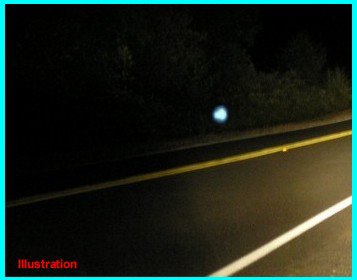
MARY ANN MESSICK
Bulletin Correspondent
The Baxter Bulletin
10-29-05
Bulletin Correspondent
The Baxter Bulletin
10-29-05
The Cooper Family settled north Monkey Run prior to the Civil War. When the war broke out, Mr. Cooper marched off to join the Confederate Army.
In June 1864, he came home on leave. It was a dark and stormy spring night when the family heard a large group of horsemen thunder into the yard. Before stepping out, Mr. Cooper made sure his wife and children understood they were not to go out, not even to look out the window until dawn. On the porch, he was met with a volley of rifle fire.
The little group huddled inside — hoping for the best and fearing the worst. And it was much worse than they could have imagined.
By dawn's light, they found the beloved father and husband's body — yes, body. His head had been completely blown away by the gun blasts. Later that day, the neighborhood women and children helped bury the pitiful corpse on a windswept hill just north of their homestead. This was the first grave in the Cooper Cemetery, which is on Kinsdale Lane behind the Arkansas State Forestry offices on Highway 126. His grave marker reads: A.W. Cooper, b. Nov. 13, 1827, d. June 4, 1864.
Shortly after Mr. Cooper's death, folks began to notice a blue, phosphorous light. The bouncing ball was about the size of a man's head, and the story was soon circulating that it was Mr. Cooper's head, hunting his body. The light would start along Carson Creek, then travel up the little creek hollow that ended at the Cooper homestead.
The light always stayed the same distance from the ground. Where the terrain was uneven, the light would bounce over the obstacle. Naturally, the light was religiously avoided because word soon got around that if the light touched you, you would instantly die a horrible death.
One night, a group of young people from the Monkey Run community were walking home from Big Meeting at Wesley's Chapel. Just as they topped the last hill on what is now Highway 178, heading for Highway 126, the light appeared — slowly, methodically, bouncing up the hollow.
Girls began to whimper and cling deliciously close to their boyfriends. Some girls, maybe a few boys, too, probably could have used a dry Pamper. To their horror, my father, who always said he was afraid of no man or beast and only a few women, ran ahead and firmly planted himself right smack dab in the path of the blue light.
As it approached, he stuck out his leg and the light passed through him.
"Just as I thought," he announced to his startled companions. "Just a will of the wisp."
A will of the wisp is a mineral gas light that originated in a damp cave along Carson Creek, traveling up the creek bed whenever atmospheric pressure was just right. In the swamps and bogs of Arkansas and Louisiana, will of the wisps are as plentiful as lightning bugs on a still summer night. The Indians thought they were the spirits of the dead.
Although I have seen the light many times as a child, it has not been spotted much since the great drought years of 1953 and 1954. But one of these times — perhaps on a dark and stormy Halloween night, Mr. Cooper's head will resume the eternal search for his body.
So — if you are traveling Highway 178 toward Highway 126 — be forewarned.
And beware.
More . . .
Home
No comments :
Post a Comment
Dear Reader/Contributor,
Your input is greatly appreciated, and coveted; however, blatant mis-use of this site's bandwidth will not be tolerated (e.g., SPAM, non-related links, etc).
Additionally, healthy debate is invited; however, ad hominem and or vitriolic attacks will not be published, nor will "anonymous" criticisms. Please keep your arguments/comments to the issues and subject matter of this article and present them with civility and proper decorum. -FW